Recipes For An Agile Workspace
Nowadays, start-ups and tech companies seem to be competing for the most beautiful offices in order to attract top talents.
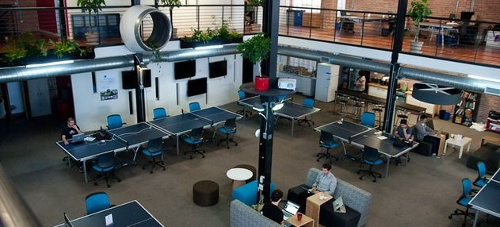
Unfortunately, sometimes, it’s just the good old office in disguise. At the opposite, some teams or companies actually think and decide how to organize their offices. For example, here is what Kent Beck says about office setup in XP embrace change
If you don’t have a reasonable place to work, your project won’t be successful. The difference between a good space for the team and a bad space for the team is immediate and dramatic.
Joel Spolsky has been blogging a lot about the office setups at FogBugz
While defining its agile culture, Spotify too designed custom offices
How does it work ?
Let’s review a few office design practices to understand how they work :
The team room or space
Having a delimited room helps to build a real team. First, by isolating from noises, it helps the team to focus on its work and current topics. Second, by providing a visual barrier to cross before anyone can disturb the team. Finally, it allows the team to organize its own visual management.
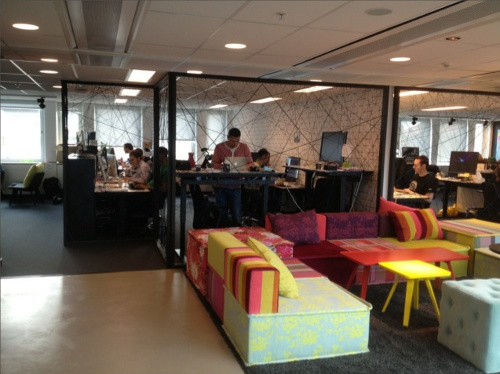
Private team gathering area
An area where the team (and only the team) can meet at any time is great to do on the spot meetings (without the hassle of finding a room). This area should be comfortable and provide a relaxed and creative atmosphere (which is very important to conduct efficient retrospectives). It can also be used to take breaks and lunches, fostering team spirit again.
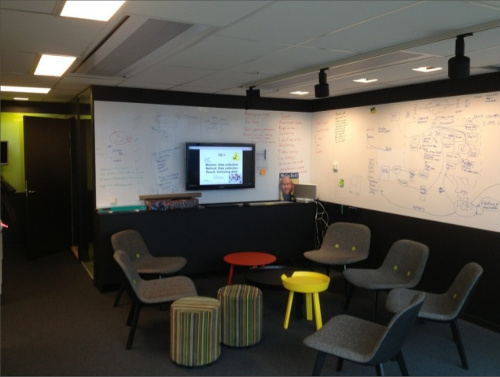
Writable walls
It’s pretty easy to cover the walls with whiteboard stickers so that there is plenty of room for discussing design and otherwise keeping important things visible for everyone.
Laptops, Wifi and movable desks
Lean manufacturing favors simple, versatile and configurable machines over powerful specialised ones, which are often pretty long to setup. In software, we don’t rely on machines as much as factories do, but there might be something to take here. Using laptops, a good Wifi and movable desks, it is pretty easy to reconfigure your office as it best fits the team at a particular moment. This way a team can easily adapt to personal preferences and turnover.
Wall screens
Agile and Lean thinkings both heavily use visual management. Having a lot of wall screens dedicated to displaying team relevant information in the team space brings a lot of value. To get the maximum benefit, these wall screens should be fully configurable and movable by the team.
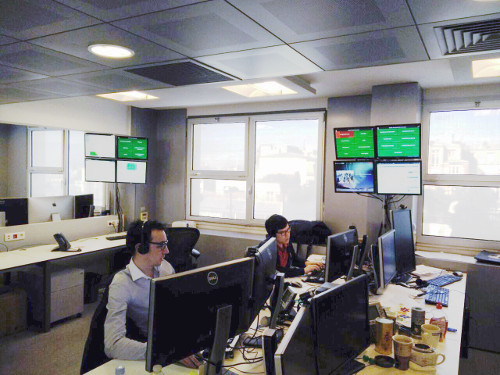
Team budget
Eventually, in order to make sure the team can always work as efficiently as possible, it should have some money to spend for its workspace. It could be used to buy any of the upper, but also anything else that might help the team at a particular point in time. Without such a budget, teams have to make a request to the office department to get anything, often to no avail, or with extra long delays.
Distributed teams
Distributed teams bring their own challenges … and workplaces needs.
Remote team space
If your team is split between 2 places (as our team is at Murex) then obviously, each site should have its own delimited space, with its own gathering area.
Constant visio connection
Connecting gathering areas through visio is a great way to build the distributed team. It prevents loosing time when a meeting is required. It also builds the team by showing what’s happening on the other side and by making it possible to take distributed lunches and breaks !
Distributed whiteboards
I never had the chance to work with one of these, but I often missed a whiteboard when working remotely … Any input on this subject would be welcome !
Lego offices
Here is another extract from Kent Beck’s “XP Embrace Change”
The courage value finds its expression in the XP attitude toward facilities. If the corporate attitude toward facilities is at odds with the team’s attitude, the team wins. If the computers are in the wrong place, they are moved. If the partitions are in the way, they are taken down. If the lights are too bright, they are taken out. If the phones are too loud, one day, mysteriously, they are all found to have cotton stuffed in the bells.
Improving the office is a cheap way to make a software organization more efficient. For another reference, here is what Tom DeMarco & Tim Lister wrote in Peopleware
Police-mentality planners design workplaces the way they would design prisons: optimized for containment at minimal cost. We have unthinkingly yielded to them on the subject of workplace design, yet for most organizations with productivity problems, there is no more fruitful area for improvement than the workplace. As long as workers are crowded into noisy, sterile, disruptive space, it’s not worth improving anything but the workplace.
Instead of designing offices, furniture departments in companies could provide a constant stock of building blocks for office building. Teams could use a workplace budget to build the workspace that suits them most. A good Wifi, laptops, enough floor power plugs, extra screens, movable tables, movable walls and easy to fix wall monitors are all things that would make this possible.
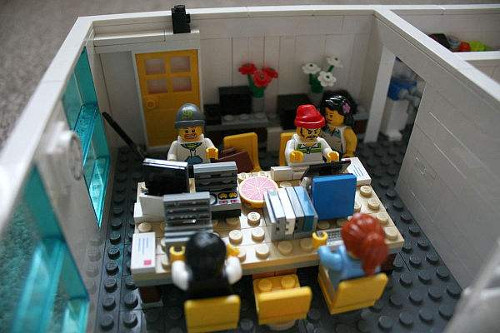
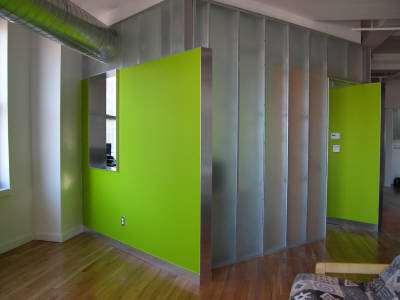

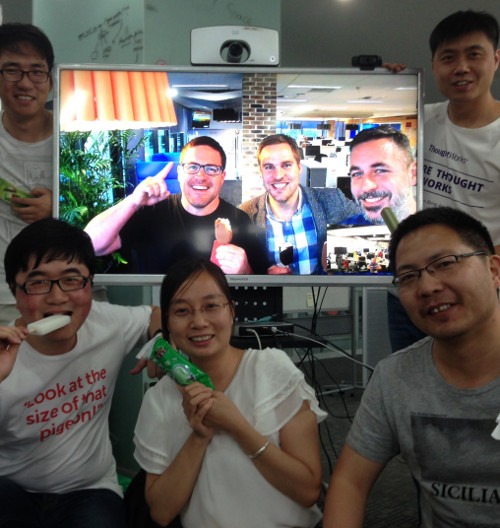




Leave a comment